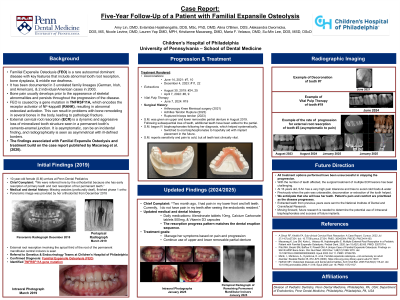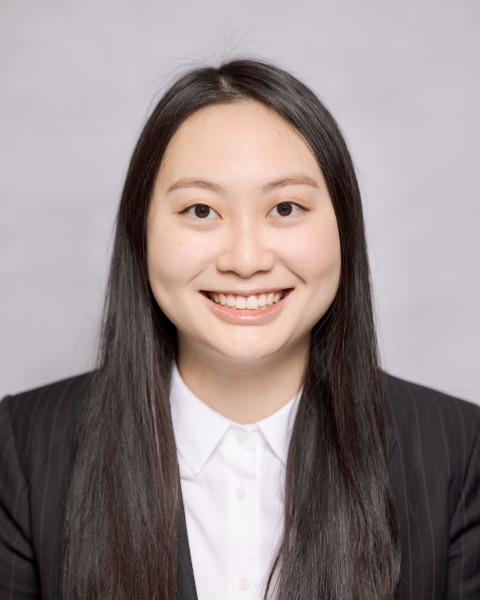Syndromes/Craniofacial Anomalies
A Five-Year Follow-Up of a Patient with Familial Expansile Osteolysis
95 - Five-Year Follow-Up of a Patient with Familial Expansile Osteolysis


Amy Lin, DMD (she/her/hers)
Resident
University of Pennsylvania School of Dental Medicine, Philadelphia, PA
University of Pennsylvania/Children’s Hospital of Philadelphia
Philadelphia, Pennsylvania, United States- EH
Evlambia Hajishengallis, DDS, MSc, PhD, DMD
Division Chief of Pediatric Dentistry and Director of the Postdoctoral Pediatric Program at Penn Den
University of Pennsylvania School of Dental Medicine, Philadelphia, PA
Philadelphia, Pennsylvania, United States - AO
Alina O'Brien, DDS
Program Director
University of Pennsylvania/CHOP
Philadelphia, Pennsylvania, United States
Presenting Author(s)
Research Mentor(s)
Program Director(s)
Introduction: Familial expansile osteolysis is an autosomal dominant condition characterized by bone dysplasia, middle ear deafness, and even external root resorption. As the disease progresses, advanced stages are marked by pathological fractures, severe bone pain, and tooth loss.
Case Report: This presentation reviews the ongoing follow-up of a 16-year-old Caucasian female. She was referred to the Children's Hospital of Philadelphia and University of Pennsylvania School of Dental Medicine on March 2019 by her orthodontist after noticing cervical external root resorption. Following dental evaluation and subsequent genetic and endocrinology testing, she was diagnosed with Familial Expansile Osteolysis at 10 years old.
Current medications include Alendronate (10mg), Calcium Carbonate (500mg), and Vitamin D3 daily. She has reported pain in various teeth since 2019. She has undergone extractions, coronectomies, vital pulp treatment, and wears an upper and lower removable partial denture. Despite these various treatment modalities, her teeth continue to resorb in the order of eruption. The long-term success of vital pulp therapy and coronectomies has been minimal, as no treatments have reliably stopped the progression of the root resorption. As of August 2024, she is asymptomatic for pain of her teeth. Currently, there is still radiographical and clinical signs of external root resorption of several teeth. She is treatment planned for decoration of teeth #23 and #26 should there be any new symptoms. This report will include findings associated with Familial Expansile Osteolysis and treatment, building on the case report published by Macaraeg et al. (2020).
Identify Supporting Agency and Grant Number:

.jpg)